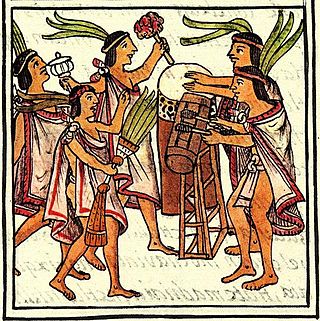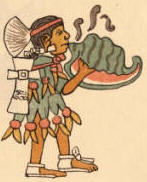Loading AI tools
1940 Aztec-inspired chamber work by Carlos Chávez From Wikipedia, the free encyclopedia
Xochipilli, subtitled "An Imagined Aztec Music", is a short composition for four wind instruments and six percussionists by the Mexican composer Carlos Chávez, written in 1940. Its original title was Xochipilli-Macuilxóchitl, which is the double name of an Aztec god in two of his aspects, meaning "Flower Prince" and "Five Flower".[1]

In connection with an exhibition titled Twenty Centuries of Mexican Art, held in May 1940 at the Museum of Modern Art in New York City, the president of MoMA, Nelson Rockefeller, commissioned Chávez to assemble a programme of music for daily presentation, under the title Panorama of Mexican Music. In addition to arrangements of popular Mexican music from the recent past, Chávez composed Xochipilli-Macuilxóchitl to showcase pre-Columbian Aztec instruments. This score was completed on 12 May 1940.[2] Chávez conducted the premiere at the opening performance of the Museum of Modern Art exhibit four days later, on 16 May 1940.[3]
In 1964 Chávez revised the score for publication. At this time he shortened the title to Xochipilli, and added the (English) subtitle, "An Imagined Aztec Music".[4]


Xochipilli is scored for ten players: piccolo, flute, E♭ clarinet, trombone, and six percussionists playing a variety of instruments, many of Aztec origin: teponaztli, huéhuetl, omichicahuaztli. The piccolo and flute deputize for Aztec flutes of bone or clay, the E♭ clarinet represents the clay ocarina, and the trombone is used as a substitute for the Aztec conch-shell trumpet.[5]
In Aztec mythology, Xochipilli is the god associated with flowers, music, and dance, as is also Macuilxóchitl. "Their difference is esoteric. Macuilxochitl is the imperceptible god, an entity beyond the scope of human thought, a timeless being dwelling in the cosmos. Xochipilli is the embodiment of the same spirit on Earth, perceived in the visible, tangible, and edible world".[6]
Xochipilli falls into three main sections, b. 1–83, 84–134, and 135–269, in an ABA' pattern. The two outer sections are in fast tempos (Allegro animato, ![]() = 100, and Vivo,
= 100, and Vivo, ![]() = 104), surrounding a slow central section (Lento,
= 104), surrounding a slow central section (Lento, ![]() = 58). Each of these parts is in turn subdivided into three subsections.[7]
= 58). Each of these parts is in turn subdivided into three subsections.[7]
Seamless Wikipedia browsing. On steroids.
Every time you click a link to Wikipedia, Wiktionary or Wikiquote in your browser's search results, it will show the modern Wikiwand interface.
Wikiwand extension is a five stars, simple, with minimum permission required to keep your browsing private, safe and transparent.